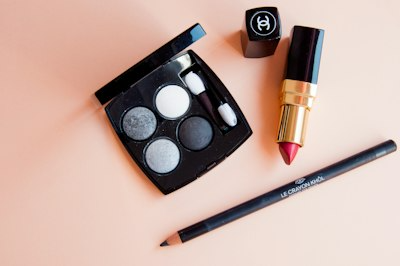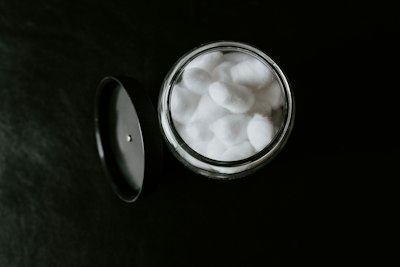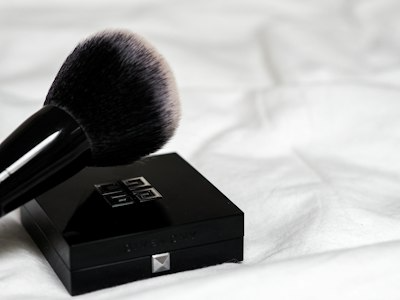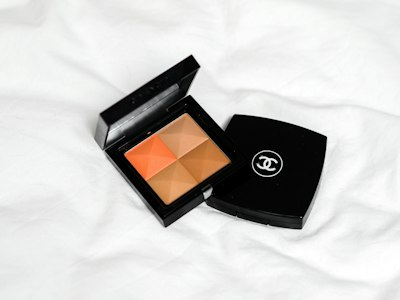
Cosmetics Industry Supply Chain Transparency: A Guide
Peeling back the layers of cosmetics industry supply chain transparency reveals a complex network, ripe for innovation. With Chanel leading the charge through TRASCE, an initiative aiming to shed light on this opaque process, there's a collective push in the beauty industry towards clarity. **What drives this movement?**
The cosmetics world is joining forces like never before. From beauty giants to packaging suppliers, they're all in on TRASCE. You'll learn how technology via Transparency One plays a pivotal role and why simplifying supplier participation matters.
FEBEA's backing underscores its importance, promising wider adoption across beauty products in France and beyond. The ultimate goal? To mitigate social and environmental risks while supporting sustainable transitions within the industry.

Table Of Contents:
- The Genesis of TRASCE
- The Power Players Behind TRASCE
- Addressing Supply Chain Challenges
- Leveraging Technology for Transparency
- Simplifying Supplier Participation
- FEBEA's Role in Supporting TRASCE
- The Benefits of Enhanced Supply Chain Visibility
- FAQs in Relation to Cosmetics Industry Supply Chain Transparency
- Conclusion
The Genesis of TRASCE
Chanel took a bold step forward by initiating TRASCE, setting a new standard for transparency in the cosmetics industry. This move was not just about enhancing their brand's integrity but also about reshaping how companies view and manage their supply chains.

Chanel's Leadership in Transparency
As one of the luxury sector’s powerhouses and cosmetic brands, Chanel recognized the pressing need for greater clarity within its operations. By spearheading TRASCE, they aimed to peel back layers of obscurity that often shroud supply chain processes. Their commitment went beyond mere compliance; it was an effort to lead by example, encouraging other brands to follow suit.
This leadership role has inspired various stakeholders across the industry to reconsider their own practices. Chanel’s initiative highlights that transparency is not only possible but essential for sustainable growth and consumer trust.
Collaboration for a Common Goal
The collaborative nature of TRASCE underscores an important shift towards unity among competitors in pursuit of greater good and global supply. It represents a collective endeavor where different entities come together, pooling resources and knowledge to achieve comprehensive supply chain visibility.
This synergy is pivotal as it amplifies efforts exponentially compared to isolated actions by individual firms. Through collaboration, these players aim to create an environment where ethical sourcing and sustainability are not just buzzwords but tangible realities guiding daily operations.
The Power Players Behind TRASCE
When Chanel decided to start the TRASCE initiative, it wasn't going solo. This movement towards greater supply chain transparency in cosmetics is a team effort.
Chanel's Leadership in Transparency
Chanel has always been more than just haute couture; it’s about setting standards. By spearheading TRASCE, Chanel aims not only to enhance its brand but also to push the entire industry towards sustainability and accountability. This move highlights how serious they are about ensuring their products come from ethical sources.
This commitment by Chanel serves as a beacon for others in the cosmetics world, proving that luxury and responsibility can go hand-in-hand.
Collaboration for a Common Goal
In an industry often marked by fierce competition, TRASCE stands out as a testament to what collaboration can achieve. Brands big and small have united under this banner with one aim: making sure every link in their supply chain is transparent.
This unity among competitors isn’t just good ethics; it’s smart business. Consumers today demand more than quality—they want assurance that what they’re buying doesn’t come at someone else's expense. Through cooperation on platforms like Transparency One, these brands are laying down tracks for a future where every product tells the full story of its journey from source to shelf.

Addressing Supply Chain Challenges
Chanel's Leadership in Transparency
Chanel took the lead in pushing for more transparency within the cosmetics industry. They understood that consumers today want to know exactly where their products come from and how they are made. This move wasn't just about meeting consumer demands; it was also about setting a new standard of accountability and sustainability.
This initiative brought together various players in the industry, highlighting Chanel’s commitment to not only improving its own supply chain but also encouraging others to follow suit.
Collaboration for a Common Goal
The formation of TRASCE marked a significant moment as competitors united with a common purpose: enhancing supply chain visibility. Such collaboration is rare, yet essential, demonstrating that achieving greater transparency isn’t a solo journey but rather requires collective effort across the entire sector.
In this spirit, companies share insights and technologies that let them trace ingredients back to their source. For example, Transparency One plays an integral role by offering technology solutions tailored for tracing complex supply chains effectively.
Leveraging Technology for Transparency
TRASCE takes a bold step forward by embracing the Transparency One platform, aiming to revolutionize how supply chains are mapped and traced. This move is not just about keeping tabs on where products come from but ensuring that every ingredient, like Lemon Myrtle, meets the highest standards of sustainability and ethics.
Chanel's Leadership in Transparency
When Chanel decided to lead the charge towards greater transparency, it wasn't merely an internal policy shift. It was a call to action for others in the cosmetics industry. By leveraging their influence, they have set new benchmarks for what consumers can expect regarding product sourcing information.
This initiative doesn’t stop at making promises; it delivers tangible results through meticulous tracking and documentation processes enabled by advanced technology.

Collaboration for a Common Goal
The journey toward complete supply chain visibility is complex and challenging. However, TRASCE demonstrates that when companies unite with a shared vision, barriers start to crumble. The collaboration between different stakeholders ensures that from raw material suppliers to final packaging producers everyone is aligned with the goal of full disclosure.
In this era where consumers demand more information about their purchases’ origins and impact, such partnerships amplify efforts towards achieving transparency across all levels of production and distribution.
Simplifying Supplier Participation
TRASCE has made it easier for suppliers to get involved by using a single platform. This approach cuts through the complexity, making supply chain transparency more straightforward.
Chanel's Leadership in Transparency
Chanel took the lead, showing how vital transparency is in today’s cosmetics industry. By launching TRASCE, they not only set new standards but also encouraged others to follow suit.
Their commitment inspired many, proving that even competitors can unite for a common cause. It's about creating a cleaner and more ethical industry.
Collaboration for a Common Goal
This initiative isn't just about one company; it's about an entire industry coming together. The Transparency One platform, which TRASCE uses, allows all kinds of suppliers to easily share information.
The beauty here lies in its simplicity: from raw material producers like those growing Lemon Myrtle to packaging manufacturers, everyone inputs data into the same system. This shared effort makes tracking products back to their source much simpler and fosters trust among consumers who are increasingly concerned with sustainability and ethics.
FEBEA's Role in Supporting TRASCE
The French cosmetics federation, Fédération des Entreprises de la Beauté (FEBEA), plays a pivotal role in elevating the TRASCE initiative. By sponsoring this groundbreaking program, FEBEA not only underscores its commitment to supply chain transparency but also amplifies the message across France and beyond.
TRASCE stands out as a beacon for change in the cosmetics industry, largely thanks to Chanel's initial push. Yet, it’s FEBEA’s backing that really helps broaden its impact. This partnership signals to all stakeholders— from beauty brands to packaging suppliers—the importance of visibility and accountability within their operations.
This collaboration between a prestigious brand like Chanel and an influential organization such as FEBEA demonstrates how competitors can unite under common goals: enhancing traceability and supporting sustainable practices. It serves as a powerful example for other sectors too, showing that transparency is achievable with collective effort and technological support.
The Benefits of Enhanced Supply Chain Visibility
Imagine knowing exactly where every ingredient in your skincare product comes from. That's what enhanced supply chain visibility offers. It's like having a backstage pass to the entire production process, ensuring everything is up to par.
Mitigating Social and Environmental Risks
With better visibility, companies can pinpoint where their ingredients are sourced from and by whom. This means they can avoid areas known for labor abuses or environmental degradation. For instance, sourcing Lemon Myrtle, an Australian botanical used in cosmetics, becomes safer when you know it's harvested sustainably without harming local ecosystems.
This transparency isn't just good ethics; it's smart business. Consumers today want assurance that products are made responsibly. When brands offer this level of detail—like showing how Lemon Myrtle is traced back to eco-friendly farms—it builds trust and loyalty.
But there's more than just avoiding risks; it's about embracing opportunities too. Transparent supply chains open doors for innovations in sustainability and ethical practices, creating new benchmarks for the industry as a whole.

FAQs in Relation to Cosmetics Industry Supply Chain Transparency
What is the cosmetic supply chain transparency Act of 2024?
This act mandates beauty brands to disclose their entire product journey, from raw materials to retail shelves.
What is transparency in supply chains?
It's when companies share detailed info about where and how products are made, aiming for ethical operations.
What are the most transparent supply chain companies?
Lush, The Body Shop, and Aveda lead by sharing their sourcing practices openly with consumers.
What would be an approach to increase transparency in the supply chain?
Firms can adopt digital tracking tools and partner with transparent suppliers to shed light on production processes.
Conclusion

So, diving into the cosmetics industry supply chain transparency reveals a world where collaboration and technology intersect. Chanel's leadership kicked things off, bringing competitors together for a clearer view of their shared supply chains.
Through TRASCE, we've seen how vital it is to unite—from beauty brands to packaging suppliers—in this clarity quest. The role of Transparency One emerged as crucial, showing that tech can indeed pave the way for greater openness.
FEBEA's support marks another key moment in this journey, highlighting the initiative's growing influence across borders. And let’s not forget: all these efforts aim at minimizing risks while championing sustainable practices within our beloved cosmetics sphere.
To wrap up: remember why we started—better visibility leads to better decisions. This movement towards more transparent supply chains isn't just about compliance; it's about building an ethical foundation for future generations to stand on.


